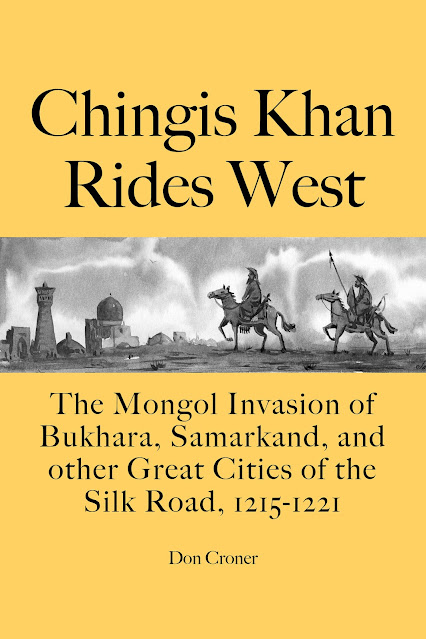Wednesday, August 23, 2023
Uzbekistan | Seven Saints of Bukhara
Saturday, August 5, 2023
Chingis Khan Rides West
Chingis Khan Rides West examines the motivation behind Chingis Khan’s ride westward to attack the Islamic world and recounts the fall of the great Silk Road cities of Bukhara, Samarkand, Termez, Gurganj, and others.
Mongolia | Wanders in Northern Mongolia
Excerpts from Wanders in Northern Mongolia:
Mongolia | Wanders in Northern Mongolia
Excerpts from Wanders in Northern Mongolia:
Hungary | India | Shambhala | Csoma de Körös
Csoma de Körös was a full-blown eccentric who devoted his entire life to the pursuit of arcane knowledge. As the Russian theosophist and fairy godmother of the New Age movement Madame Helena Blavatsky noted, “a poor Hungarian, Csoma de Körös, not only without means, but a veritable beggar, set out on foot for Tibet, through unknown and dangerous countries, urged only by the love of learning and the eager wish to shed light on the historical origin of his nation. The result was that inexhaustible mines of literary treasures were discovered.” Among the written works unearthed were the first descriptions of the Buddhist realm of Shambhala to reach the Occident.
Körösi Csoma Sándor, later better known as Alexander Csoma de Körös, was born in Hungary on 4 April 1784 to a family of so-called Szeklers, a semi-military caste of the Hungarian Magyars who considered themselves descendants of Attila’s Huns. For centuries they had guarded the frontiers of Transylvania against the non-Christian Turks to the south. Csoma was expected to take up management of the family estate but at an early age began exhibiting symptoms of wanderlust . . . See Eccentric Hungarian Wanderer–Scholar Csoma de Körös and the Legend of Shambhala.
 |
| Tomb of Csoma de Körös in Darjeeling, India |
Italy | Venice | Early Life of Enrico Dandolo
There are few greater ironies in History than the fact that the fate of Eastern Christendom should have been sealed—and half of Europe conde...

-
When I woke up unexpectedly at three a.m. last night it suddenly dawned on me that I have not said nearly enough about the Samanids, who ru...
-
While Events Played Out In Otrār yet other drama were unfolding high up in the hidden recesses of the Pamir Mountains on the southern edge ...
-
Bukhara claims to be one of the world’s oldest cities. In 1997 the city celebrated its 2500th anniversary, although admittedly this date ...







